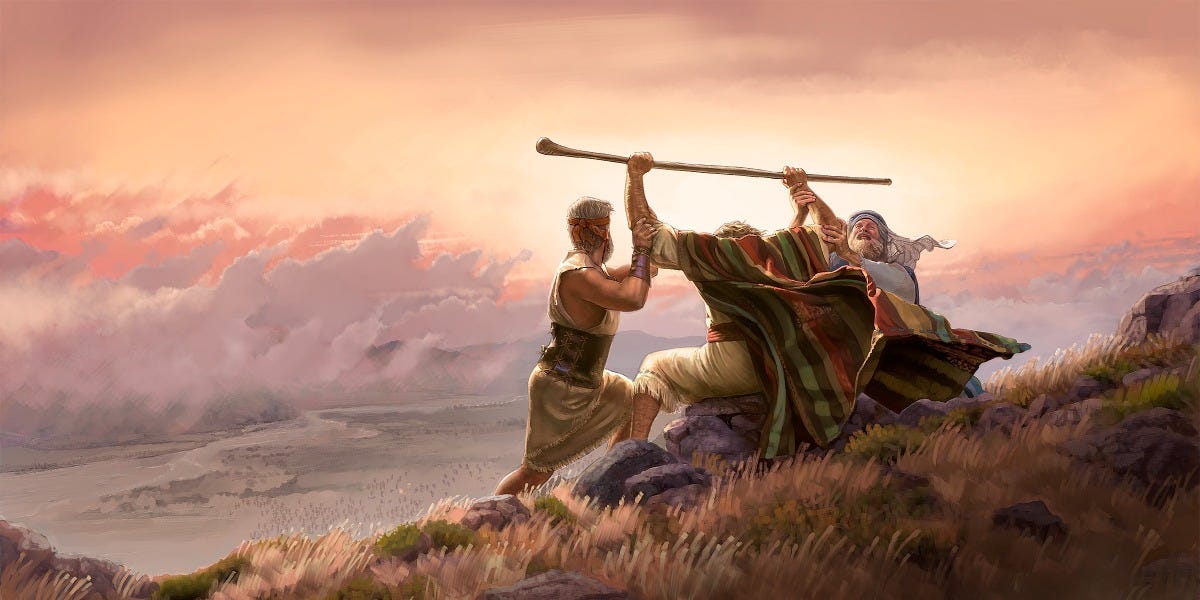Moses Raising and Lowering His Hands
How a mountain scene of victory in Exodus 17 points to Christ
I’ve argued previously that the New Testament does not identify all Old Testament types. I’ve illustrated this point by discussing the famous example of Rahab’s cord and whether that cord has anythin…




